We often hear the term “reckoning” in the context of America’s collective wake-up call to racial injustice, signaled by the violent death of George Floyd and ensuing protests in June 2020. Yet, this past decade has shed new light on the exclusionary underpinnings of theories, ideas and establishments that were once considered defensible in society, prompting a greater cultural transformation around marginalized categories.
The realization that inclusion is not just a favor for underrepresented people, but a requisite for social equity has galvanized brands and institutions to reflect on their status quo. Companies from Silicon Valley to Wall Street to Main Street have come out in support of marginalized groups, upping their diversity, equity and inclusion initiatives to combat stigma and discrimination.
Inclusive Language in Marketing Communications
As marketing communicators, we have a responsibility to continually examine the words and imagery we create through a lens of inclusion. Content and messaging that prioritizes inclusive language provides validation and acknowledgment to groups who have traditionally been ignored in the marketing space. When almost all content, big or small, touches topics like gender, sexuality, race, age and ability, it’s necessary to be deliberate and careful in our communication. The words we use matter.
Following the lead of diverse activists and publications, the Associated Press (AP) Stylebook now features a chapter on inclusive storytelling, with guidelines for overcoming unconscious biases and using precise language when communicating about marginalized groups. At an industry level, many tech companies have replaced the insensitive coding terms “master/slave” and “whitelist/blacklist.”
On their own, these adjustments are not a substitute for the efforts needed to address discrimination in the workplace, in business, or across the country. There is plenty of work to be done on both individual and institutional levels. Still, they are a start.
Words Matter
Nuance and distinction are important in our language. It’s not just the words we use but the way we use them that can heavily alter their impact on others. Language can lift people up, but it can also be twisted to benefit one group over another and used to gloss over injustices. In that way, it can be its own system of oppression.
Adopting more inclusive language across your communications doesn’t happen by snapping your fingers. You have to question what was once acceptable and determine if it is exclusionary, change your overall mindset about language, then stick around for the evolving conversation. With that in mind, this article will focus less on what words are considered “right” and “wrong” — we’ll link to resources that cover word choice around race, gender, sexual orientation, and abilities at the end. Instead, we’ll go through an ongoing process of reading, learning, and reflecting that your marketing team can adopt to identify discriminatory language.
But First, What Is Inclusive Language?
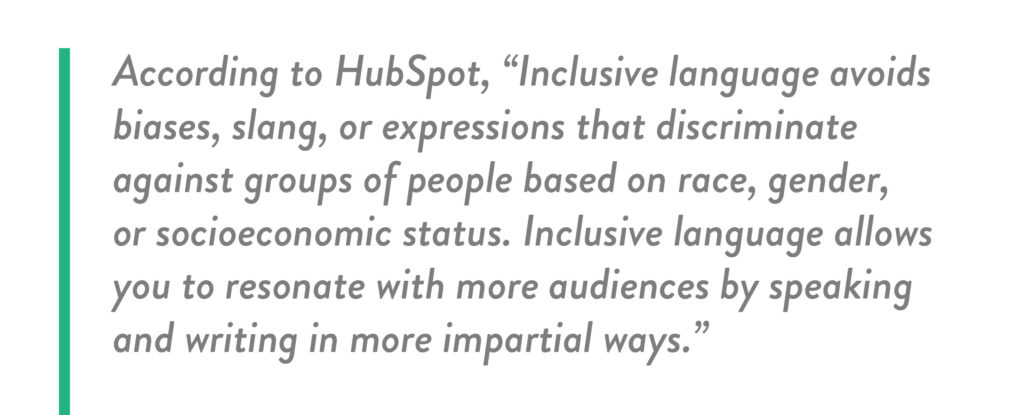
As marketers, we spend a lot of time deliberating over the words we use. It’s our job to make sure that what we write in a blog or say in a presentation is impactful, and that our words resonate with our audience. But resonance is about more than relating to the majority. We also need to ensure we don’t alienate or hurt a particular group of people. We have a responsibility to be inclusive and to understand the words we choose — their meaning and origin, and how others might interpret them.
1. Consider the Impact of Your Words, Not the Intent
As our team has been reading more about inclusive language, we wondered where to draw the line. Are there instances where we might be overthinking? For example, we discussed and considered the origin and meaning of the word “white paper” when drafting this piece.
But, when we consider advocating for or against the use of a particular word, we try to remind ourselves of a central philosophy of inclusivity, impact vs. intent. Meaning it’s not the intent of a word or phrase that matters, but the potential impact on the recipient.
Consider this — if you were training an executive for a media briefing and they said something that could be misinterpreted, you wouldn’t think, “It’s okay the journalist will know they didn’t mean it.” You’d correct them politely, so they don’t get misquoted. Similarly, when it comes to inclusive language, it’s up to us as marketers to consider how someone else, particularly someone with different experiences, might perceive the information we’re sharing, whether it’s through a media interview or a social post.
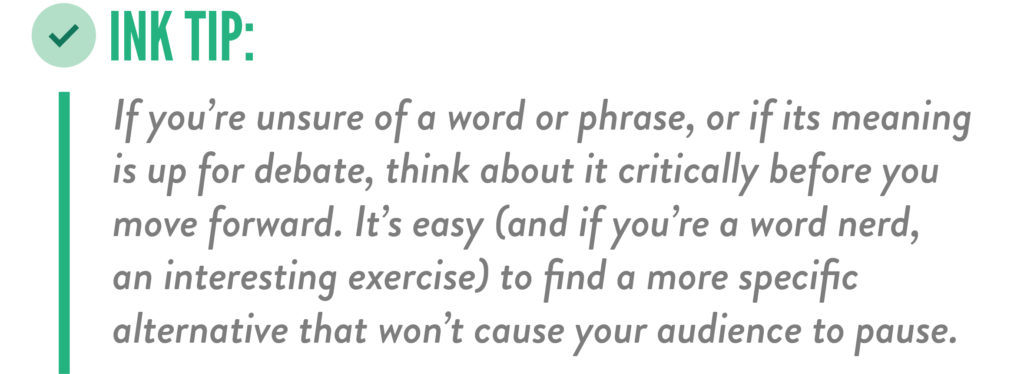
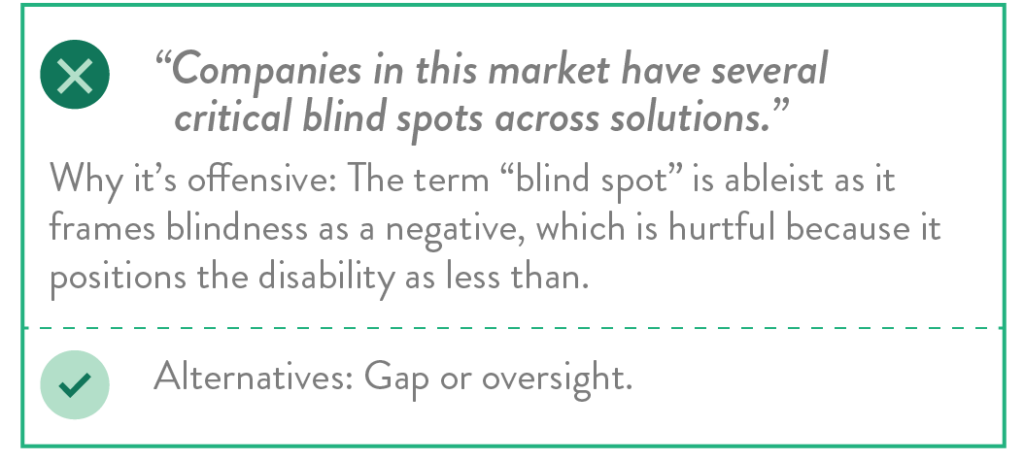
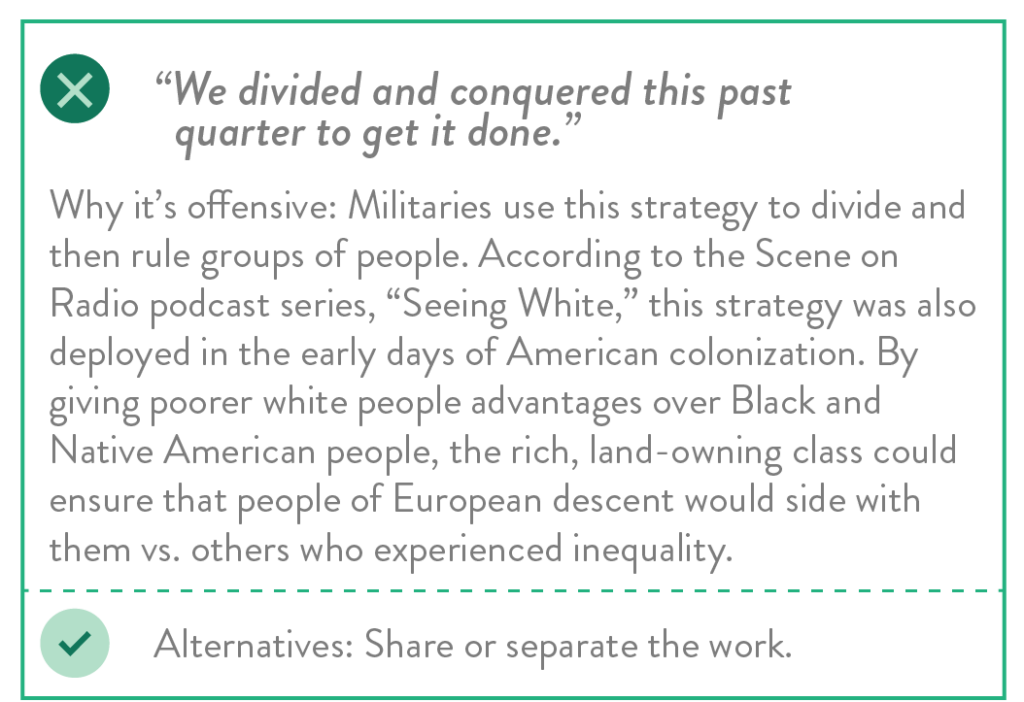

2. Find Reputable Sources to Stay in The Know
Learning and unlearning the language we use every day is an ongoing process. Words that were ‘acceptable’ or ignored yesterday can quickly be thrust into the spotlight for the wrong reasons. It can seem overwhelming to have to identify every inimical word or phrase, especially without context or understanding. That’s why building on knowledge through reading and conversation is imperative. The more your team reads and discusses, the easier it will become to identify and stay current on language changes.
Inclusivity and Inclusive Word Choice Resources
- The Conscious Style Guide
- A Progressive’s Style Guide
- An Incomplete Guide to Inclusive Language for Startups and Tech
- Anti-Racism Daily
- Disability Language Style Guide
- Gender Queries
- Inclusive Language Guide

3. When Making Inclusive Language Updates to Your Style Guide, Don’t Just Conform to The Standard
At INK, we subscribe to AP Style for the most part. But even the AP can sometimes fall behind when making language updates to its stylebook. Its announcement to capitalize “Black” came after two years of research as well as recent public criticism from those who were advocating for the change in the wake of the Black Lives Matter protests.
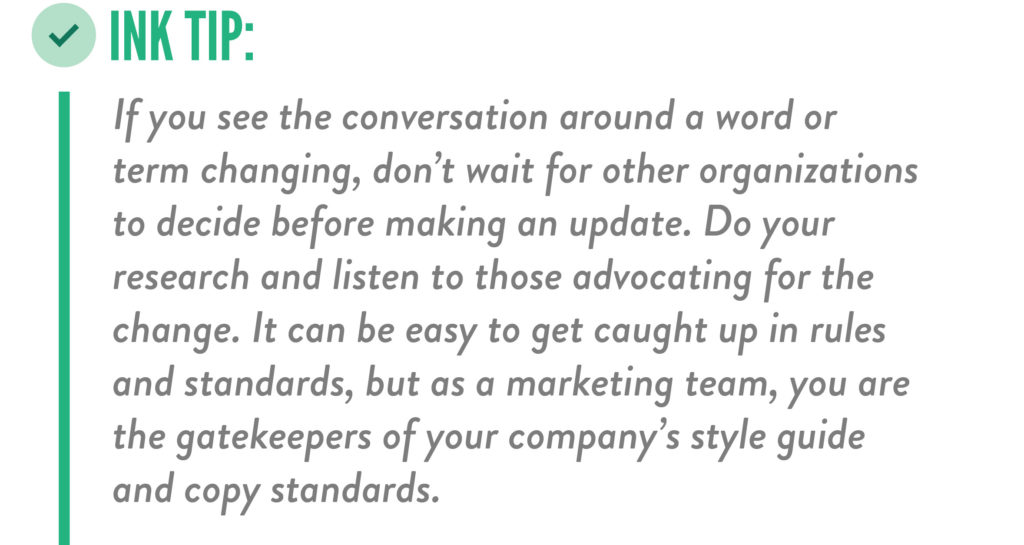
4. Remember: Language Doesn’t Have to Be Offensive to Be Exclusionary
In your efforts to adopt more inclusive language throughout your communications, it’s important to consider not just what language might be deemed derogatory or offensive, but also exclusionary. Certain jargon, acronyms, and even emojis that may seem straightforward to you could be unfamiliar or confusing to others, preventing them from participating. Strive to look at your language critically, asking if there are certain words or phrases that might exclude those from outside of your organization, industry, or peer group.
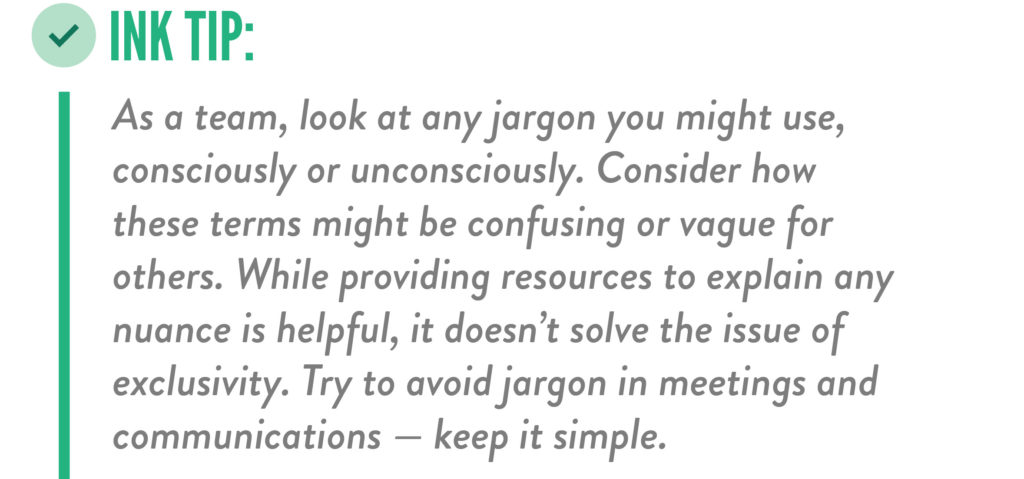
5. Acknowledge Your Errors
You’re going to make mistakes when shifting your language to be inclusive. You might even have conversations with colleagues on how to phrase something inclusively and still end up making a mistake and having it pointed out.
If that happens, acknowledge your error with the person who noted it and your wider audience and organization. Then, edit the content and make the correction. Most importantly, take the occurrence as an opportunity to learn and grow as an inclusive communicator. In the metamorphic landscape of inclusive language, it’s most important to prioritize inclusion and be open to becoming better.
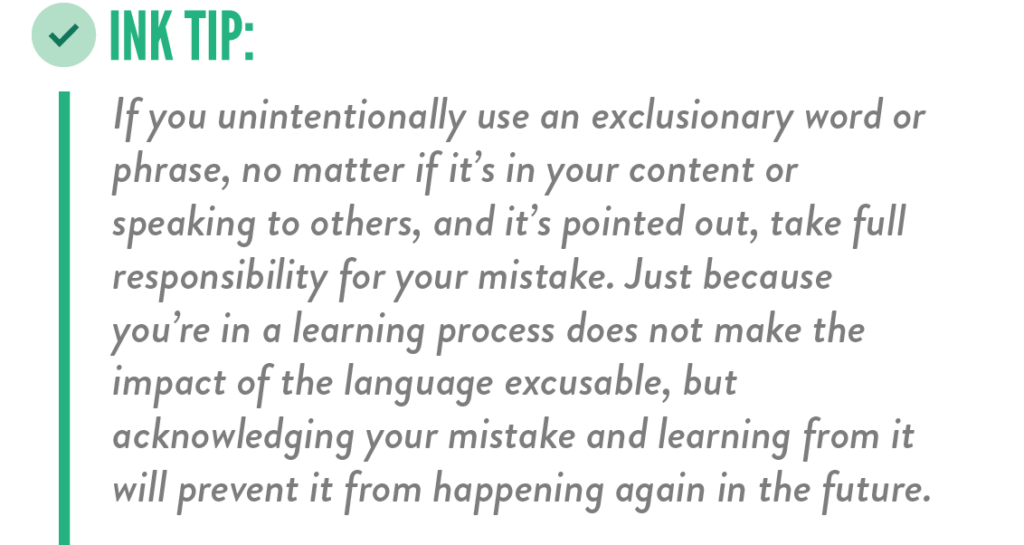
Moving Forward: Think Beyond What People Might Consider Objectionable
Promoting inclusivity through language goes beyond simply ensuring your company avoids a PR blunder. Committing to inclusive language is a prominent reflection of your company’s culture as it relates to diversity, equity, and inclusion. It’s about justice for people who deserve more from our society. As your company continues its journey toward widespread inclusivity, think about how language can not only include, but also uplift those who are marginalized.
There is no quick solution to practicing inclusivity. But we can chip away at the flawed and unjust system through our words and actions. As marketers, we have authority over the words we use. Let’s strive to use them for good.



